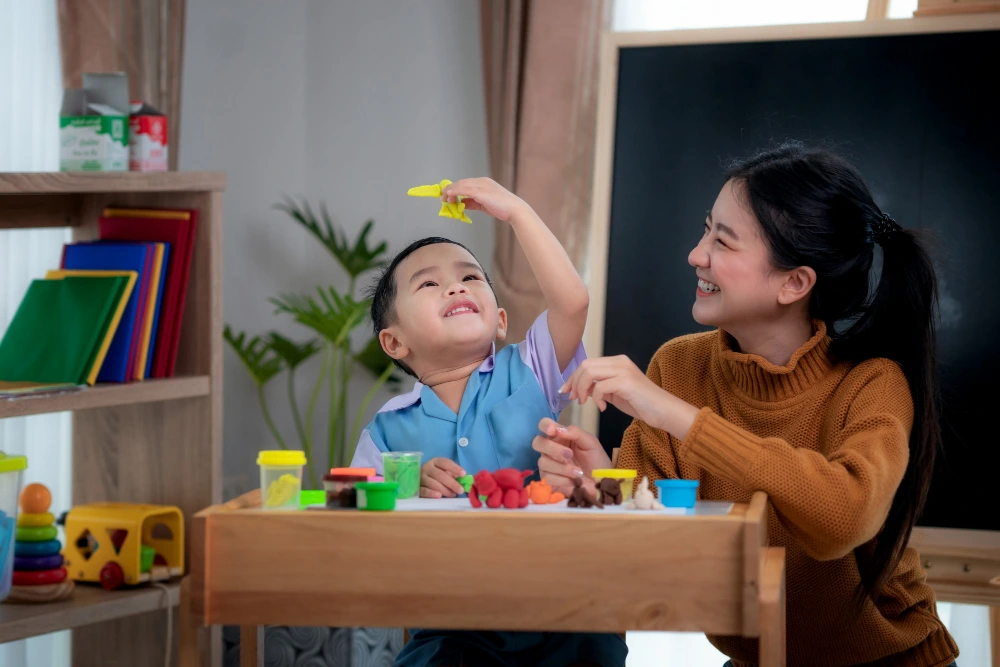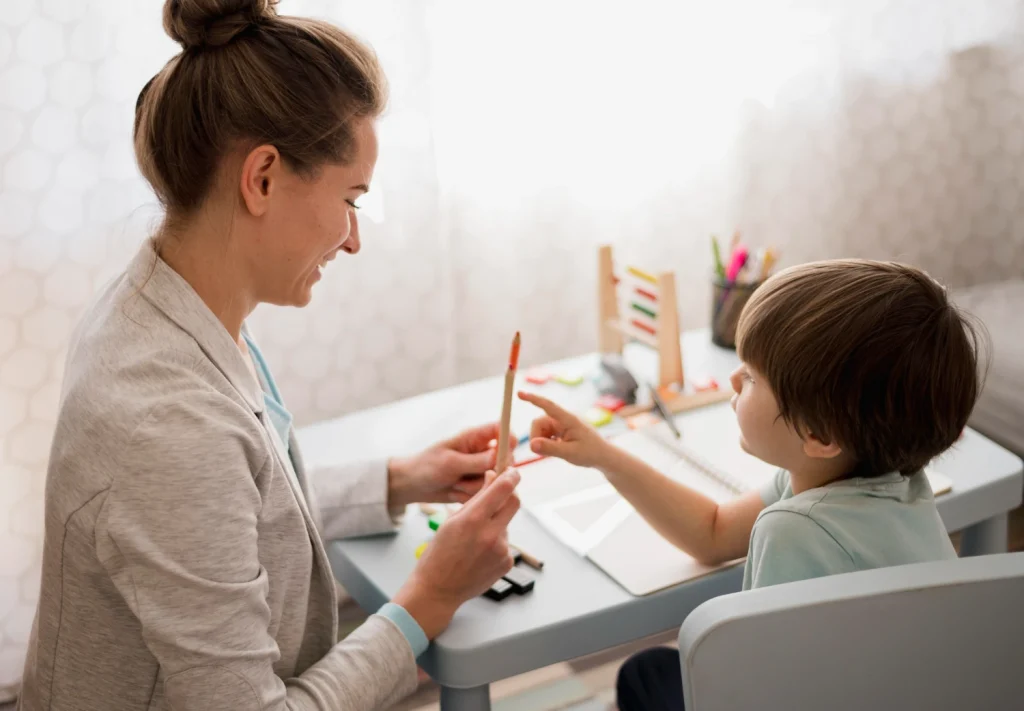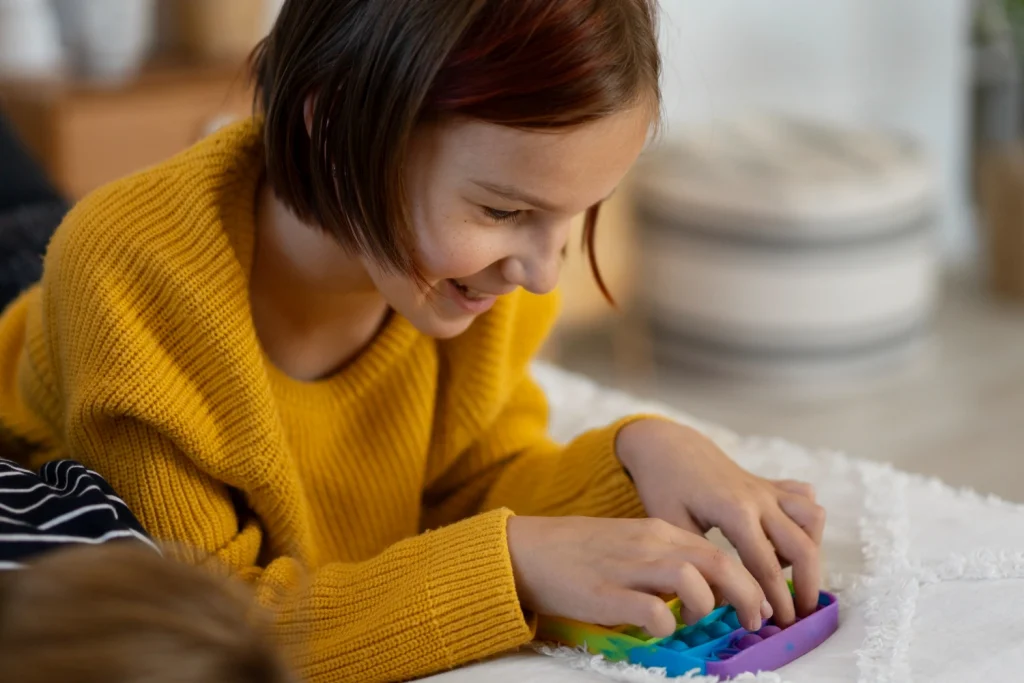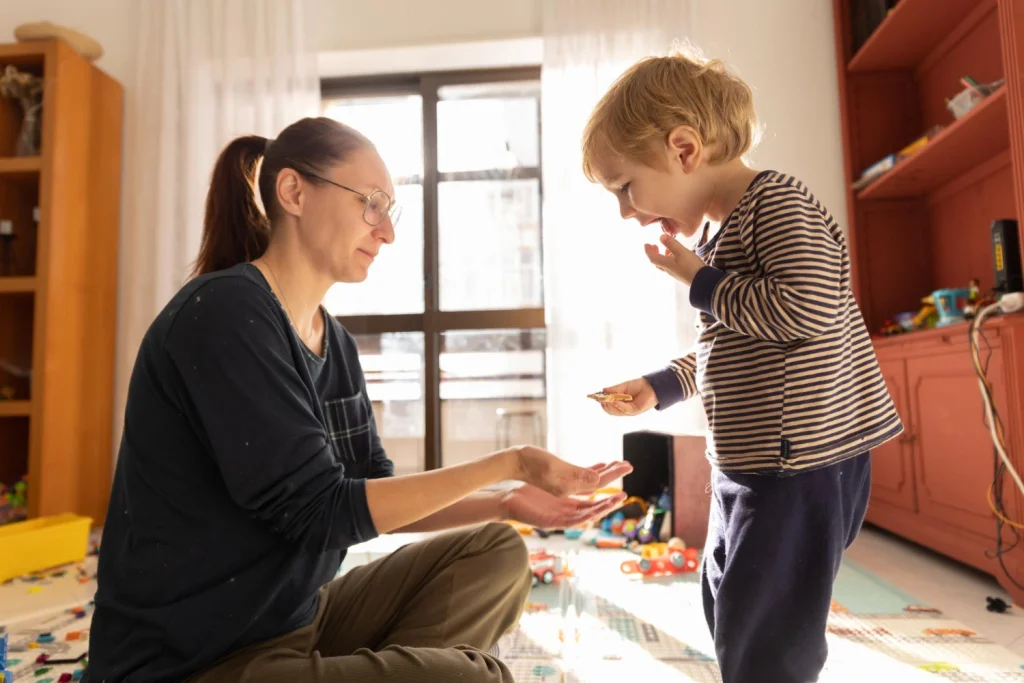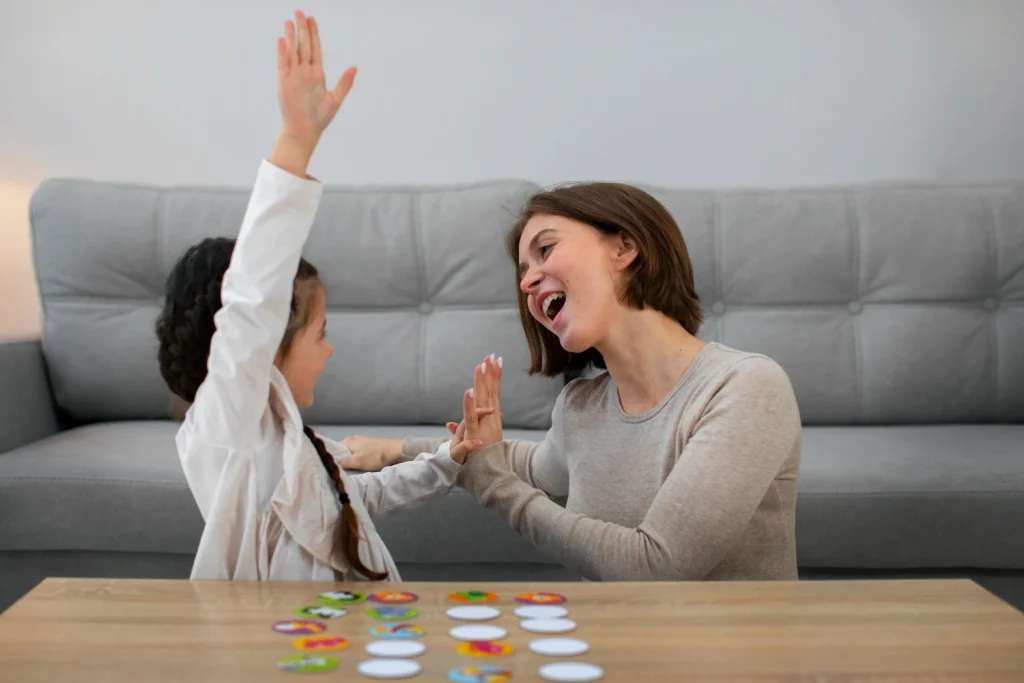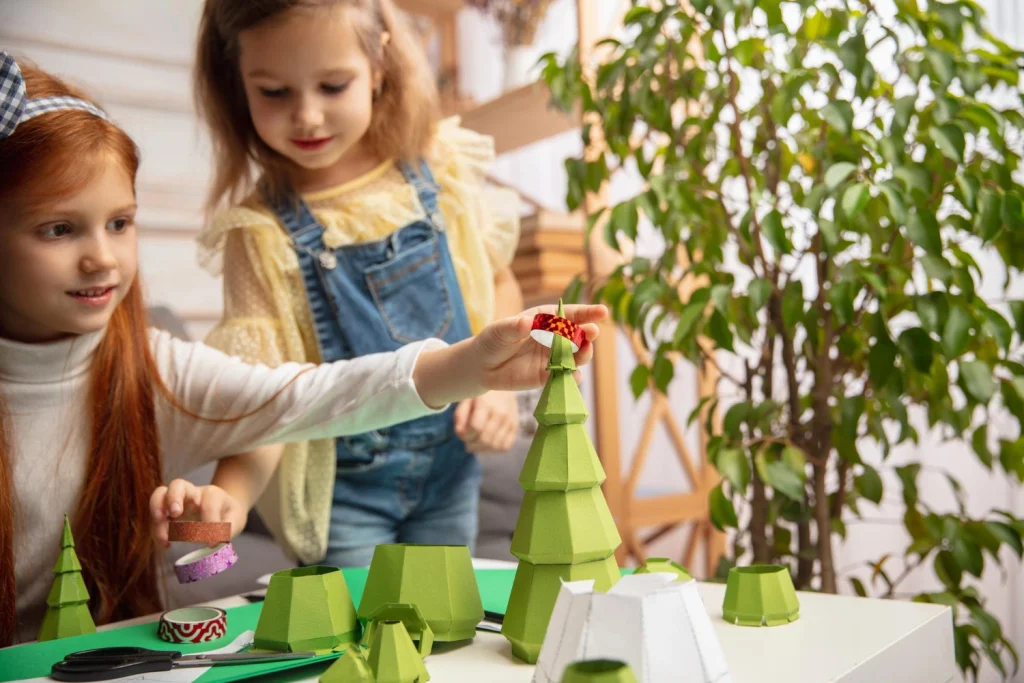One of the questions I get asked often is how my approach – DIRFloortime – can support a child’s Occupational Therapy goals, especially when it comes to sensory integration and regulation. While I’m not an occupational therapist myself, I work very closely with families and therapy teams to support the child’s overall development, and sensory processing plays a big role in that.
In my sessions, I focus on how a child’s unique sensory profile influences the way they engage with the world. Some children are easily overwhelmed by noise, touch, or movement. Others might seek out intense sensory input – bouncing, spinning, crashing – because it helps them feel more organised. Understanding these patterns helps me tailor my approach so that the child feels safe, regulated and ready to connect.
DIRFloortime isn’t about working through a checklist of skills. Instead, it’s about meeting the child where they are – emotionally, developmentally and physically – and using those moments of connection to help them grow in their developmental capacities. If a child comes into a session dysregulated, my first goal isn’t to “get on with the activity.” Rather, it’s to co-regulate with them. That might mean slowing down my voice and movements, offering calming sensory input, or joining them in a favourite repetitive action until they feel more grounded.
Once they’re regulated, and in a place where engagement is possible, that’s where the real wonders of DIRFloortime happens. I might invite them into a simple play routine that supports body awareness, such as rolling a ball back and forth or blowing and popping their favourite bubbles. These aren’t random games – they’re purposeful, based on where the child is developmentally and what their sensory system needs to build resilience and flexibility.
Over time, I’ve seen children grow in their ability to notice what their body needs, tolerate a wider range of sensory experiences and recover more quickly from moments of overwhelm. That’s what sensory integration and regulation look like in the real world – and it’s why this approach works.
I also work closely with parents and carers to reflect on what strategies are helping their child, both in and out of sessions. Sometimes, that means adjusting the environment. Sometimes, it means building new routines around sensory needs. And sometimes, it means just being there to say, “You’re doing a great job. Let’s keep going.”
If your child is working with an occupational therapist, I align my approach to support their goals through consistent, relationship-based play. If there’s no OT involved, that’s okay too. Through DIRFloortime, I help children build sensory regulation and emotional resilience in a way that’s respectful, playful and developmentally appropriate.

